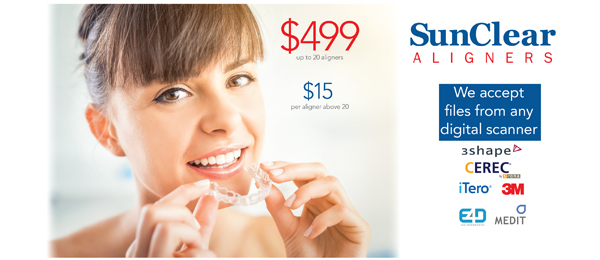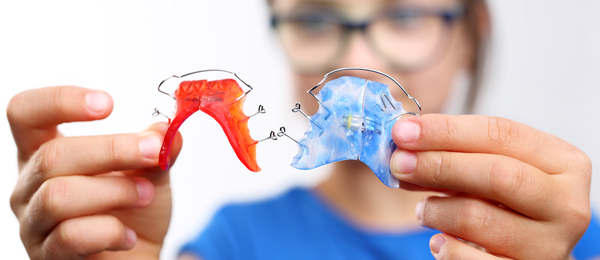Editor’s note: Most patients think of orthodontic treatment as ending after active tooth-moving appliances are removed. However, clinical research demonstrates that orthodontic retention is mandatory, not only to “heal the teeth” in their new positions but also to guard against normal age-related changes. The first article in this issue reviews what happens after orthodontic treatment with and without retention—the authors note that 2 to 3 years of retention is not enough. The second article evaluates the length of time that retainers typically last. For the general dentist who monitors the patient after orthodontic treatment and initial retention are completed, there is an ongoing need to check retainers to see if they need to be repaired or replaced. The third article looks at several methods of cleaning vacuum-formed retainers to preserve clarity and flexibility characteristics. The final article focuses on root resorption, an adverse effect of tooth movement that is usually clinically insignificant, but noticeable. How do biomechanical variables affect treatment-induced root resorption?
Maintaining mandibular incisor alignment after orthodontics
Avoiding relapse and age-related adverse changes in tooth position after orthodontic treatment is a challenge for clinicians. In a retrospective longitudinal study, researchers examined the dental and skeletal changes in patients treated with fixed orthodontic appliances with or without retainers and compared these changes with those in untreated participants. The study was published in the February issue of American Journal of Orthodontics & Dentofacial Orthopedics.
A total of 105 patients underwent orthodontic treatment with fixed appliances in both jaws. Of these patients, 64 (23 boys, 41 girls) received a custom-made lingual mandibular retainer, and 41 (17 boys, 24 girls) did not receive a retainer. The percentage of patients who underwent extractions as part of orthodontic treatment was the same for the retention and nonretention treatment groups. The untreated control group consisted of 25 children (14 boys, 11 girls). At baseline, the mean (standard deviation [SD]) age of participants was 12.9 (3.27) years, 12.3 (1.80) years, and 13.4 (1.77) years for the retention, nonretention, and untreated groups, respectively.
One investigator conducted all examinations and obtained all measurements. Using a sliding digital caliper, the examiner obtained measurements on dental casts at 4 time points for children in the treatment groups: before treatment (T0), immediately after orthodontic treatment and the start of retention (T1), 6 years after treatment (T2), and 12 years after treatment (T3). The mean (SD) retention time was 2.7 (1.5) years. Patients in both treatment groups also received a removable retainer for the maxillary arch. For participants in the nonretention treatment group, study casts were available at T0, T2, and T3.
The examiner also evaluated sagittal and vertical relationships between the jaws and incisor inclination on lateral head radiographs before (T0) and after (T1) orthodontic treatment, as well as 6 and 12 years after treatment.
The main outcome measure in this study was mandibular incisor irregularity, as determined by the Little irregularity index (LII) (that is, the summed displacement of the anatomic contact points of the mandibular anterior teeth; scores range from 0 [perfect alignment] through 10 [very severe irregularity]).
The study findings showed no significant differences in mandibular incisor irregularity between the retention and nonretention treatment groups 12 years after orthodontic treatment (T3), the authors wrote. However, the researchers observed significant differences between the 2 treatment groups and the untreated control group. At baseline (T0), the mean (SD) LII in children in the untreated group was 1.90 (1.38) compared with 4.59 (3.16) in the retention treatment group and 3.86 (2.88) in the nonretention treatment group. At T3, the LII also was lower in the untreated group (mean [SD], 2.87 [1.79]) than in the retention and nonretention treatment groups (4.26 [2.39] and 4.60 [2.11], respectively).
In the 2 treatment groups, mandibular incisor irregularity 12 years after treatment was almost at the same level as that before treatment. In the untreated group, LII increased over time but not to the same extent as that in the treated groups. Thus, use of mandibular retainers for only 2 to 3 years after orthodontic treatment does not appear to prevent long-term relapse and age-related changes, the authors concluded. If a patient wants to constrain natural physiological changes, lifelong retention is required.
Read the original article here or contact the ADA Library & Archives for assistance.
Retainer survival time and common causes of failure
Retainers play an important role in the long-term success of orthodontic treatment. In a study published in the October 2018 issue of European Journal of Orthodontics, researchers examined the survival times of different types of retainers and investigated the potential predictors of retainer failure.
In this retrospective, cross-sectional study, researchers gathered data from the records of patients treated at the University of Otago orthodontic clinic in Otago, New Zealand, from 2003 through 2014. The study sample included 591 retainers from 309 patients (177 females [mean age, 16.3 years] and 132 males [mean age, 16.6 years]). Inclusion criteria were completion of active fixed orthodontic treatment and having been fitted for mandibular or maxillary retainers or both within a week after debonding. All retainers in this study were fabricated in the university’s dental laboratory.
Of the 591 retainers, 278 (47%) were stainless steel lingual fixed retainers bonded at the canines (8 maxillary, 270 mandibular), 199 (33.7%) were Hawley retainers (maxillary only), 34 (5.8%) were vacuum-formed retainers (29 maxillary, 5 mandibular), and 80 (13.5%) were combo retainers (a combination of 2 different retainer types in the same arch: 67 maxillary, 13 mandibular). For each retainer, the researchers recorded the year of delivery, survival time, and reasons for failure. They defined failure as any event requiring replacement or repair of the retainer; lost retainers were treated as failures because they could not fulfill their retention role.
The researchers performed survival analyses to compare the survival times of the various retainer types. The findings showed that lingual fixed retainers had the longest survival time (median, 1,604 days), followed by Hawley retainers (1,529 days) and vacuum-formed retainers (105 days). The researchers found no statistically significant difference in survival time between the Hawley retainer and lingual fixed retainer groups (P = .526). Furthermore, the retainer survival times did not differ significantly between the maxilla and mandible.
The researchers did not observe any statistically significant associations between retainer survival time and patient age, sex, or socioeconomic status (P > .05). They did, however, find an association between survival and time of retainer delivery (P = .01), with earlier delivery being associated with longer survival.
Of the 591 retainers, 244 (41.3%) failed during the follow-up period (up to 3,723 days). Hawley retainers were the most likely to have been lost (52%), lingual fixed retainers were the most likely to have debonded (63.5%), and vacuum-formed retainers (43.5%) were the most likely to have experienced fracture.
Survival time is an important factor for clinicians to consider when prescribing a retention regimen. To enhance patients’ compliance and minimize failures, the authors advise clinicians to inform their patients of the common causes of failure for each type of retainer.
Read the original article here or contact the ADA Library & Archives for assistance.
The effects of different cleaning methods on copolyester retainer material
Retention is an important factor in maintaining the benefits of orthodontic treatment. The objective of this study was to evaluate light transmittance, surface roughness, and flexural modulus of a copolyester retainer material after exposure to several cleaning methods. Previous studies have indicated an increasing use of vacuum-formed retainers. The current study was published in the March issue of Angle Orthodontist.
The researchers decided to test copolyester retainer material (Essix ACE, Dentsply Sirona) owing to its virtual transparency and durability when exposed to chemicals. The researchers heated and vacuum-formed 80 specimens over a stainless steel block (55 ×18 × 6 millimeters). They then randomly divided the 80 specimens into 8 groups (n = 10 each). In all groups, 5 specimens underwent testing for flexural modulus, and 5 specimens underwent testing for light transmittance and surface roughness. In addition, 1 specimen from each of the 8 groups underwent scanning electron microscopy (SEM).
The investigators tested the following cleaning solutions: Invisalign cleaning crystals (Align Technology), Retainer Brite (Dentsply Sirona), Polident (GlaxoSmithKline), Listerine mouthrinse (Johnson & Johnson), 2.5% vinegar, 0.6% sodium hypochlorite, 3% hydrogen peroxide, and toothbrushing with distilled water.
Two times a week for 6 months, the investigators immersed the specimens into 600 milliliters of the assigned cleaning solution or brushed them for 2 minutes with the toothbrushing machine. They prepared the solutions according to the manufacturer’s instructions. With the exception of Polident, which was used for 3 minutes, the specimens were immersed in the solutions for 15 minutes. After the cleaning sessions, the specimens were stored in a fresh batch of artificial saliva at 37°C.
At baseline and 6 months, the researchers measured light transmittance, surface roughness, and flexural modulus of the specimens using spectrophotometry, profilometry, and 3-point bend testing, respectively. They also performed qualitative testing of the specimens using SEM.
The study findings showed a statistically significant mean difference in light transmittance (F7,32= 9.282) and flexural modulus (F7,32= 6.656; P < .001) among the cleaning methods from baseline to 6 months. Specimens submerged in Listerine experienced the greatest decrease in light transmittance (P < .001); those subjected to toothbrushing also experienced a greater change in light transmittance. The Invisalign and Retainer Brite products exhibited the best maintenance of clarity. Specimens in 3% hydrogen peroxide demonstrated the greatest change in flexural modulus; the difference between this group and the Invisalign cleaning crystals and Retainer Brite groups was statistically significant (P < .001).
The researchers observed no statistically or clinically significant difference in surface roughness between the cleaning solutions (F7,32= 0.963; P = .474), as well as no qualitative differences using SEM analysis.
The results of this study suggest that the cleaning solutions tested affected the long-term physical properties of copolymer retainer material. To date, no cleaning method for this popular retainer material is ideal, the authors concluded.
Read the original article here or contact the ADA Library & Archives for assistance.
Orthodontic treatment and external root resorption
In this systematic review, researchers investigated the association between orthodontic treatment and external root resorption. The study was published in the March issue of American Journal of Orthodontics & Dentofacial Orthopedics.
The investigators searched the following electronic databases up through February 2018: MEDLINE, PubMed, Embase, Scopus, Cumulative Index to Nursing and Allied Health Literature, Cochrane Library, and Latin American and Caribbean Health Sciences Literature. They also hand searched selected orthodontic journals, ongoing trials, gray literature, and journal reference lists.
Inclusion criteria were randomized controlled trials (RCTs) conducted in patients who received fixed orthodontic appliances or sequential thermoplastic aligners, the authors wrote. Exclusion criteria were studies of patients with craniofacial abnormalities; studies that included concomitant exogenous drug use, an external stimulus, or adjunctive maxillofacial surgery; and studies that included patients who previously underwent orthodontic treatment or combined surgical and orthodontic treatment.
The investigators used the Cochrane Risk of Bias Tool and the Grading of Recommendations Assessment, Development and Evaluation (GRADE) approach to assess the quality of included studies.
Two reviewers independently retrieved a total of 654 articles in the initial searches of titles and abstracts. After removing duplicates and studies that did not meet the inclusion criteria, they identified 24 RCTs with a total of 1,004 patients for inclusion in the systematic review. The interrater agreement for article inclusion was very good (κ = 0.885).
The studies were published from 1994 through 2017, with samples sizes ranging from 6 through 154 participants. The mean age of patients ranged from 12.3 through 20.9 years.
All studies in the systematic review applied orthodontic force to teeth (incisors or premolars), but the measurement tools varied. Eleven studies evaluated orthodontically induced external root resorption (OIERR) using microcomputed tomography, 4 studies used electron microscopy, 6 studies used intraoral periapical radiography, and 3 studies used cone-beam computed tomography. Furthermore, of the 24 studies, 13 assessed root resorption by means of volumetric measurement, 9 measured changes in root length, and 2 measured the affected root surface area.
The results of this systematic review showed an association between orthodontic force and external root resorption. Specifically, 3 split-mouth studies evaluated the use of continuous and interrupted orthodontic force, and all 3 found that continuous force resulted in significantly greater OIERR. Eleven studies assessed the effect of light or heavy orthodontic forces on root resorption. All but 1 of these studies found a positive association between OIERR and an increase in the magnitude of orthodontic force, regardless of the direction. Three studies reported an association between intrusive orthodontic force and external root resorption, and 1 study reported a significant increase in root resorption with increased treatment duration.
Using the GRADE tool, the 2 reviewers rated the evidence in 23 of 24 studies as predominantly low to very low; they rated the evidence in 1 trial as moderate. Of the 24 studies, only 5 included a control group, 3 reported an appropriate randomization strategy, and 9 measured OIERR before the intervention, the authors wrote. Moreover, the researchers noted that heterogeneity among the studies (with regard to what was measured and how it was measured) was a profound limitation of the systematic review. Consequently, no meta-analysis was performed.
The systematic review findings showed a positive correlation of OIERR with continuous force, intrusive forces, heavy forces, and treatment duration. Further studies are needed to overcome the methodological limitations of the studies in this systematic review, the authors concluded.
Read the original article here or contact the ADA Library & Archives for assistance.

The SunClear advantage
More and more patients are asking for aligners but, due to costly aligner lab fees, many are forced to decline treatment or go online (for do-it-yourself aligners). Thanks to the SunClear 3D aligner design software and manufacturing solution, digital orthodontics has now become more affordable. SunClear aligners are the clear alternative to expensive and overpriced aligner systems.
• Save up to 50% on aligner lab fees.
• High-quality aligners design ready for approval ready in a matter of days after the impression has been received by the lab.
Educational flyer for those considering at-home orthodontic treatment  Questions to Consider When Researching Direct-to-Consumer Orthodontic Companies is an educational flyer prepared by the American Association of Orthodontists. Suggestions are offered about the kinds of questions consumers may want to consider asking before proceeding with a direct-to-consumer orthodontic company. Among them: do you know the name of the dentist or orthodontist who will be specifically involved with your care? If an emergency arises, does the company have a dentist or orthodontist in your area that you can see in-person? The flyer reminds readers that orthodontic treatment is not a product or device, it is a professional medical service.
Questions to Consider When Researching Direct-to-Consumer Orthodontic Companies is an educational flyer prepared by the American Association of Orthodontists. Suggestions are offered about the kinds of questions consumers may want to consider asking before proceeding with a direct-to-consumer orthodontic company. Among them: do you know the name of the dentist or orthodontist who will be specifically involved with your care? If an emergency arises, does the company have a dentist or orthodontist in your area that you can see in-person? The flyer reminds readers that orthodontic treatment is not a product or device, it is a professional medical service.
ADA CE Online orthodontics courses  Need CE? ADA CE Online has hundreds of hours of CE that you can earn from the comfort of your own home. Take a look at our courses focused on orthodontics that you can implement in your own practice. Too many to choose from? Take them all! Get an ADA CE Online subscription for one year and enjoy unlimited access. Subscribe now!
Need CE? ADA CE Online has hundreds of hours of CE that you can earn from the comfort of your own home. Take a look at our courses focused on orthodontics that you can implement in your own practice. Too many to choose from? Take them all! Get an ADA CE Online subscription for one year and enjoy unlimited access. Subscribe now!
![Dr. Graber Preferred Photo[2]](https://pages.ada.org/hs-fs/hubfs/Dr.%20Graber%20Preferred%20Photo%5B2%5D.jpg?width=140&name=Dr.%20Graber%20Preferred%20Photo%5B2%5D.jpg)
The consulting editor for JADA+ Specialty Scan — Orthodontics is Lee W. Graber, DDS, MS, MS, PhD; Diplomate, American Board of Orthodontics. |
|






